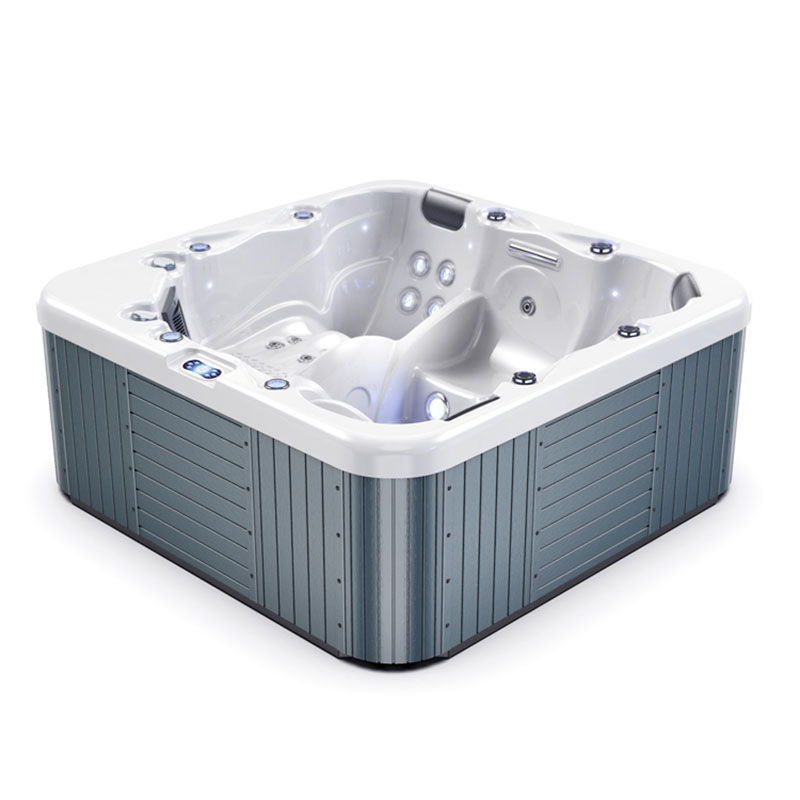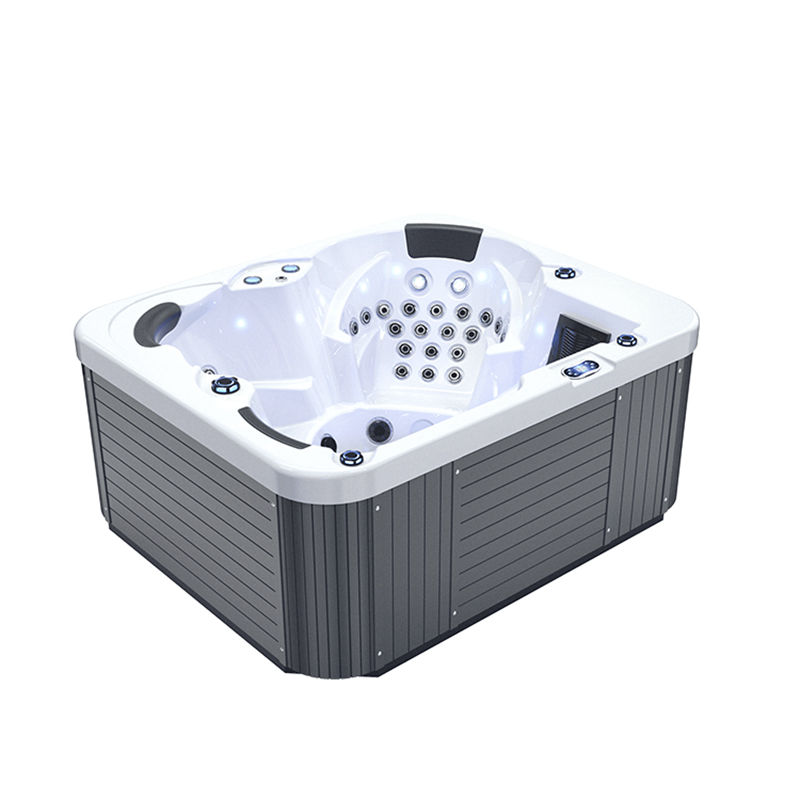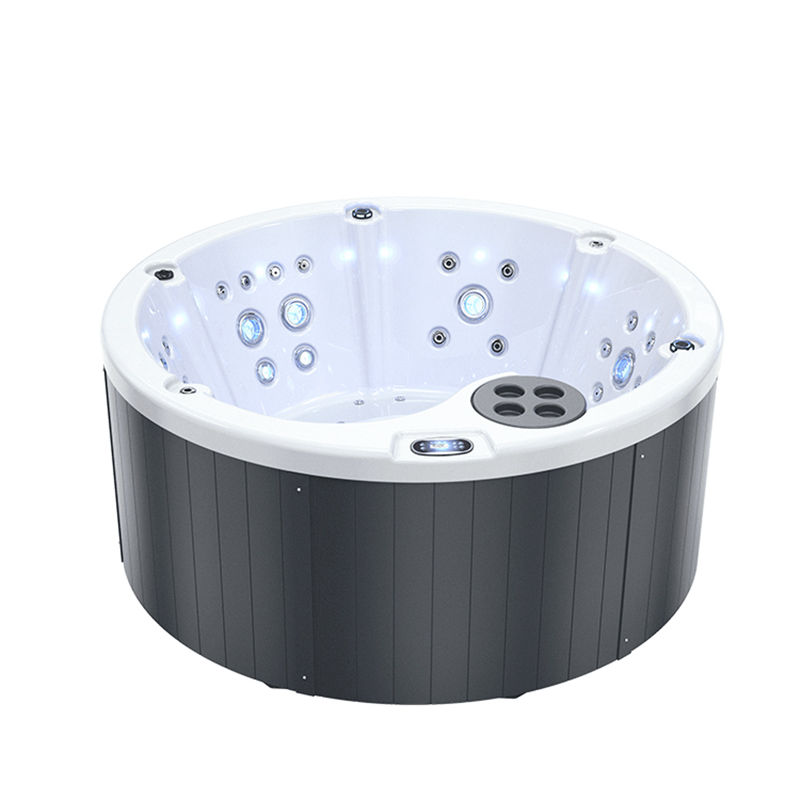Whirlpool spa hot tubs are popular as a place for relaxation and enjoyment, especially during cold weather or during periods of high work pressure. However, this comfort carries a hidden health risk: Legionnaires' disease. Legionnaires' disease is a serious lung infection caused primarily by Legionella bacteria.
Legionella is a naturally occurring bacterium found in water that thrives particularly in warm water. Therefore, high temperatures, such as those in whirlpool spa hot tub, create a breeding ground for this bacteria.
So, what is the risk of contracting Legionnaires' disease from a whirlpool spa hot tub? In this article, we'll explore this question in detail, analyzing the risk factors for Legionnaires' disease, how the bacteria is transmitted, and how to reduce the risk of infection to help everyone better protect their health.
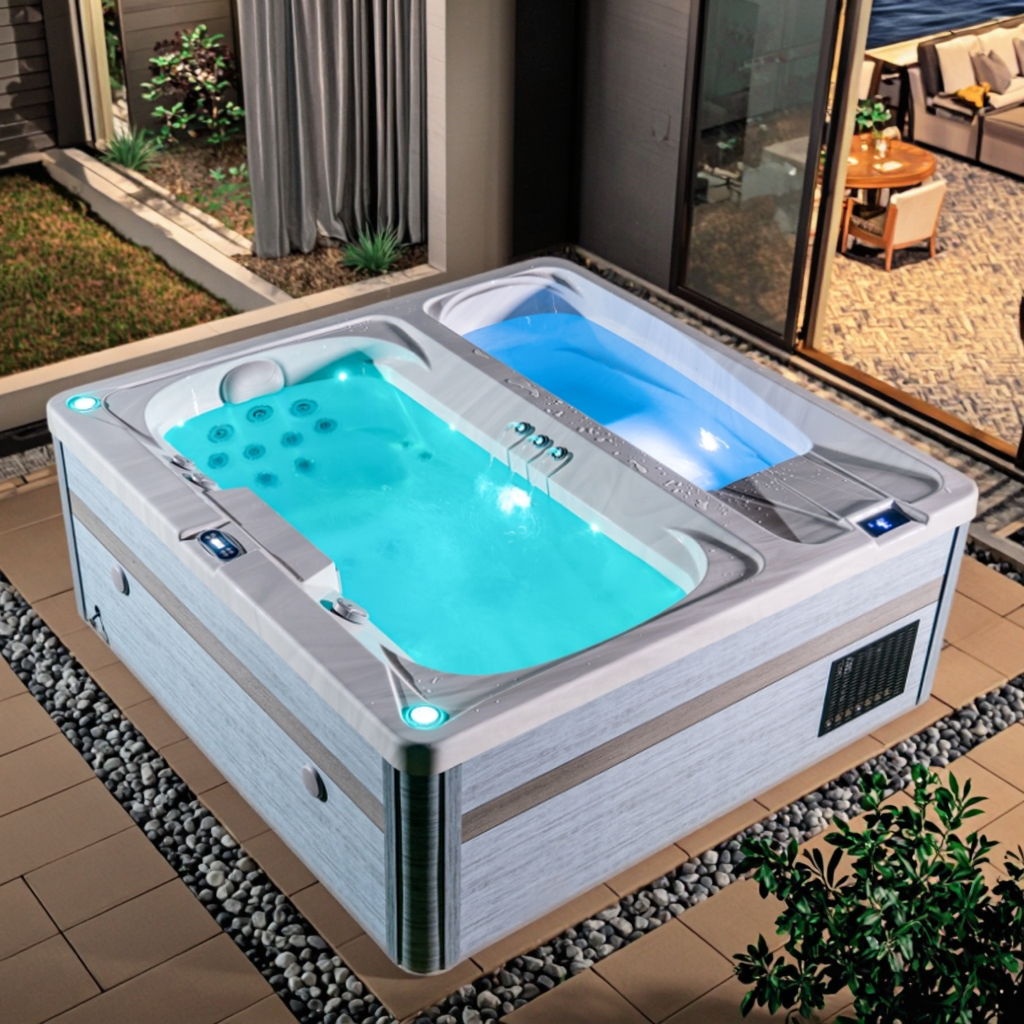
What is Legionnaires' disease?
Legionellosis is a lung infection caused by Legionella bacteria, the most common form of which is Legionnaires' pneumonia. The disease gets its name from a 1976 outbreak of severe respiratory infections at a Legionnaires' convention in Philadelphia, which was ultimately identified as Legionnaires' bacteria.
Symptoms of Legionnaires' disease are similar to those of pneumonia and include fever, cough, shortness of breath, muscle aches, and headaches. In severe cases, Legionnaires' disease can cause severe lung damage and even death. Early treatment is crucial to controlling symptoms and minimizing progression.
According to the Centers for Disease Control and Prevention (CDC), approximately 8,000 to 18,000 Americans contract Legionnaires' disease each year, although many mild cases may go undiagnosed, so the actual number of infections is likely higher.
What are the characteristics of Legionnaires' bacteria?
Legionella bacteria are widely found in natural water bodies such as lakes, rivers, hot springs, and soil, but in these environments they are usually present in low concentrations and do not pose a direct threat to human health. However, when introduced into artificial water systems, particularly warm water environments, they can multiply rapidly. The circulation, heating, and ventilation of warm water systems provide ideal growth conditions for Legionella bacteria. Legionella bacteria thrive best in warm water between 20°C and 45°C, a range typically found in whirlpool spa hot tubs, making them prime breeding grounds for Legionella. Furthermore, organic matter in the water, such as algae, skin cells, and other contaminants, provides a nutrient source for Legionella bacteria.
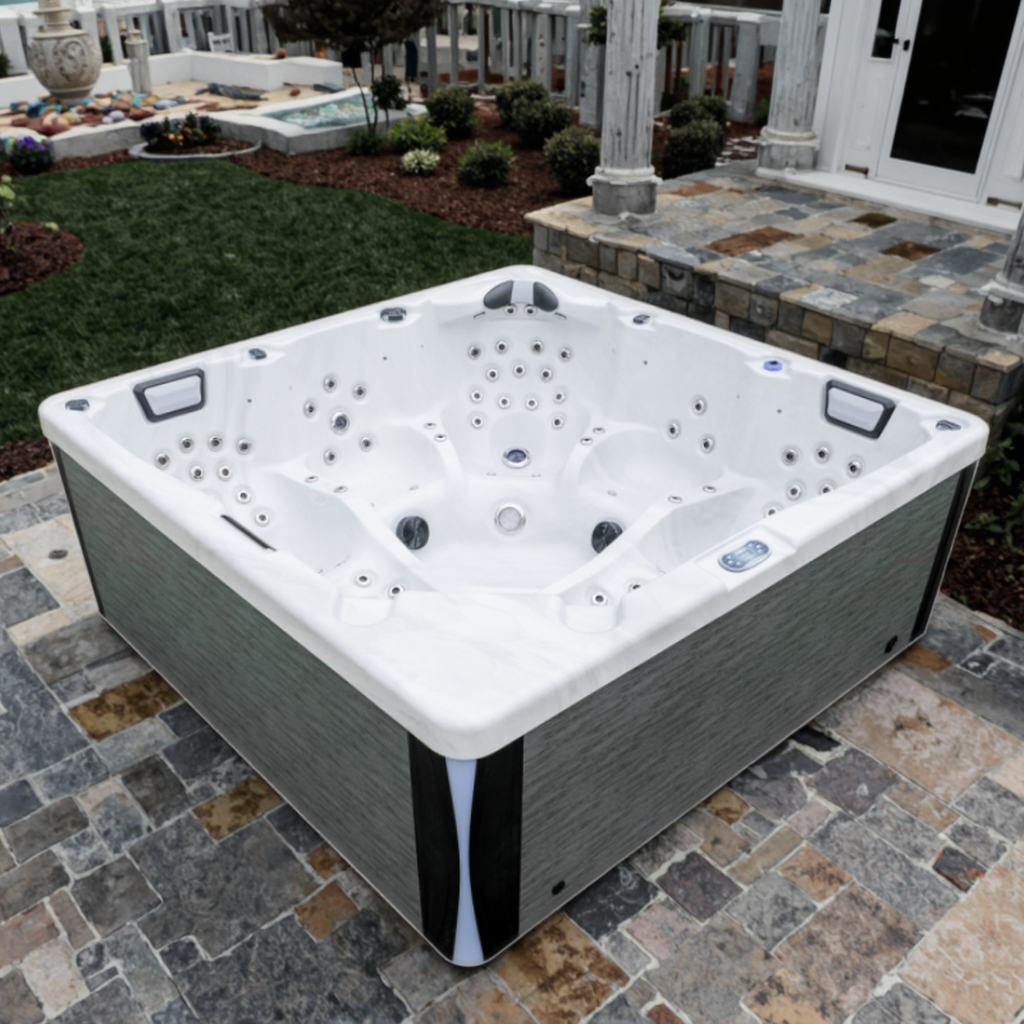
How is Legionnaires' disease transmitted?
Legionella bacteria are spread through the inhalation of mist or aerosols containing the bacteria. This mist can be produced by devices such as jets, shower heads, fountains, or aeration tubs. Whirlpool spa hot tubs, where mist is often generated due to the water temperature and the equipment's circulation systems, present a high-risk environment for Legionnaires' disease transmission.
Importantly, Legionnaires' disease cannot be spread directly from person to person; it can only be spread through airborne mist or aerosols. When these tiny droplets of water containing the bacteria are inhaled, the bacteria enter the lungs and begin the infection.
What is the risk of Legionnaires' disease in a whirlpool spa hot tub?
1. Whirlpool spa hot tubs as breeding grounds for Legionella
Whirlpool spa hot tubs, due to their warm and humid environment, provide ideal conditions for the growth of Legionella bacteria. Especially in public or commercial whirlpool spa hot tubs, the high number of users can easily lead to elevated bacterial counts in the water. If the whirlpool's water treatment system or disinfection measures are inadequate, Legionella bacteria can rapidly multiply and spread in this environment.
2. What is the risk of infection?
Although millions of people enjoy whirlpool spa hot tubs each year, the actual risk of contracting Legionnaires' disease from these facilities is relatively low. However, the magnitude of this risk is closely related to several factors, including:
• Water quality management: If spa facilities fail to adhere to strict water quality regulations, particularly if disinfectants (such as chlorine or bromine) are insufficiently used, the risk of infection can increase significantly. Disinfectants are crucial for combating Legionella.
• Equipment maintenance: Irregularly cleaned or poorly maintained whirlpool spa hot tubs can easily become breeding grounds for bacteria. Stagnant water in the equipment, clogged filters, and accumulated dirt in the pipes all contribute to the growth of Legionella bacteria.
• Number of users: Public facilities often have a high number of users, and skin cells, sweat, cosmetics, and other contaminants enter the water, increasing the risk of bacterial growth.
• Individual immunity: Legionnaires' disease does not affect everyone. The primary risk is among individuals with weakened immune systems, such as the elderly, those with chronic illnesses, smokers, and those with suppressed immune systems.
While the incidence of Legionnaires' disease is relatively low, it poses a greater threat to certain populations, and symptoms can be severe, making the risk significant.
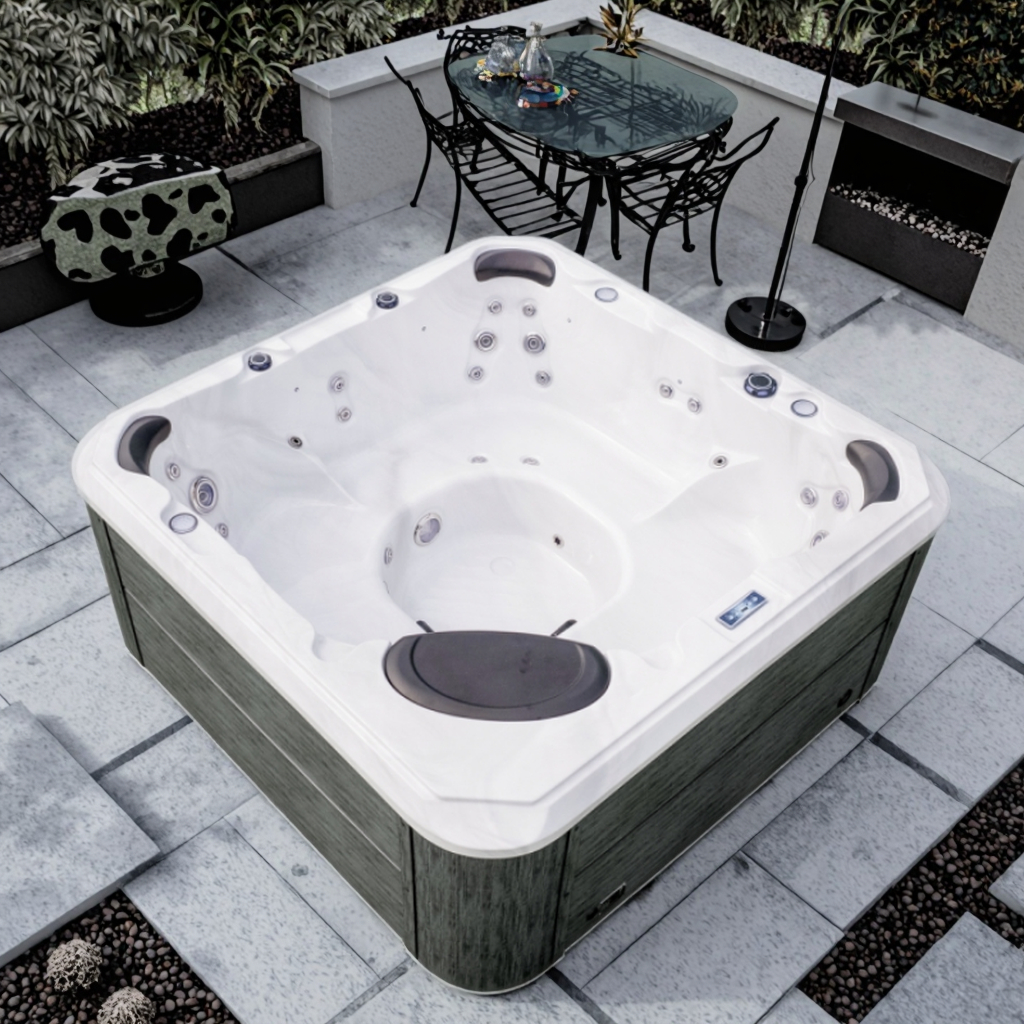
What are the measures to prevent Legionnaires' disease?
To reduce the risk of contracting Legionnaires' disease while using a whirlpool spa hot tub, it is important to take appropriate precautions. These measures apply not only to public whirlpool spa hot tubs, but also to private facilities at home.
1. Maintaining an appropriate level of disinfectant
The most common way to prevent Legionnaires' disease is to maintain an appropriate level of disinfectant, such as chlorine or bromine, in the water. These disinfectants effectively kill Legionnaires' disease and prevent the bacteria from multiplying in the water. According to health regulations, the chlorine content in a whirlpool spa hot tub should be maintained at 1-3 ppm, while the bromine content should be maintained at 3-5 ppm.
If the disinfectant concentration is not monitored and adjusted over time, the disinfectant level in the water may decrease, increasing the risk of bacterial growth. Therefore, it is very important to regularly test the disinfectant level in the water.
2. Regular Cleaning and Maintenance
In addition to maintaining water disinfection, regular cleaning and maintenance of the whirlpool spa hot tub and its associated equipment are also key to preventing Legionnaires' disease. Here are some basic maintenance steps:
• Cleaning the filter: The filter is the first line of defense against dirt and organic matter entering the water. Regularly cleaning or replacing the filter can reduce the opportunity for bacterial growth.
• Cleaning the pipes: The pipe system in a whirlpool spa hot tub is often a breeding ground for Legionella bacteria, so the pipes need to be flushed and cleaned regularly to prevent bacterial accumulation.
• Draining and Water Changes: The whirlpool spa hot tub should be thoroughly drained and deep cleaned every few weeks or even months. Regular water changes not only reduce organic contaminants in the water but also help control bacterial growth.
3. Temperature Control
Temperature management is also an effective way to prevent the growth of Legionella. Legionella thrives best in warm water between 20°C and 45°C. However, Legionella rapidly dies when water temperatures exceed 60°C. Therefore, appropriately increasing the temperature of a whirlpool spa hot tub (e.g., regularly heating it to above 60°C) can effectively kill bacteria.
However, it's important to note that excessively high water temperatures can cause discomfort or risks to users. Therefore, it's important to maintain a comfortable temperature during daily use. However, periodically increasing the temperature for short periods to kill bacteria is also an effective preventative measure.
4. Air circulation and water circulation
Maintaining good ventilation in the whirlpool spa hot tub area is crucial to reduce the concentration of bacteria in mist or aerosols. Increasing air circulation can effectively reduce the concentration of Legionella-containing aerosols in the air, reducing the risk of inhalation.
Also, ensuring that the water in the spa is constantly circulating is an effective way to prevent bacterial growth. Water circulation reduces stagnant areas, preventing bacteria from growing in stagnant water.
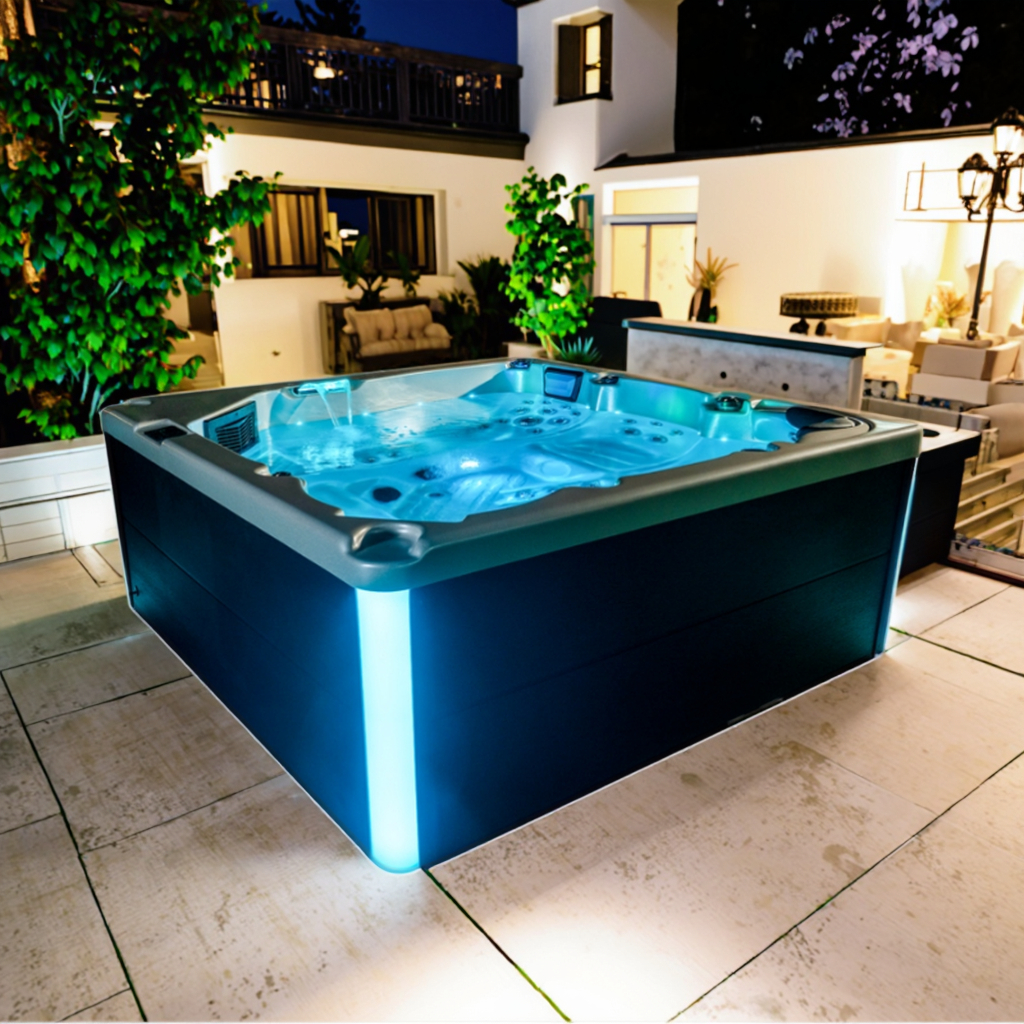
Who is at high risk for Legionnaires' disease?
Although most people do not become infected with Legionella bacteria when exposed, certain high-risk groups face increased health risks. The following groups are more susceptible to Legionnaires' disease:
• People over 65
• People with chronic lung diseases, such as chronic obstructive pulmonary disease (COPD)
• People with weakened immune systems, such as those undergoing chemotherapy or taking immunosuppressant medications
• Smokers
Therefore, if you fall into any of these categories, you should exercise extreme caution when using your whirlpool spa hot tub and adhere to strict cleaning and maintenance requirements.
What types of spa products do you manufacture and sell?
We manufacture a wide range of high-quality water spa products, including spa massage bathtubs, swim spas, hot tubs, and outdoor spa jacuzzis. Our product line suits luxury hotels, resorts, private homes, and commercial use. Each spa is designed for comfort, durability, and easy maintenance.
As a top Chinese spa manufacturer and supplier, we offer low-cost, high-value solutions for clients seeking wholesale purchases and long-term cooperation.


